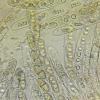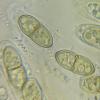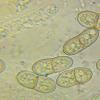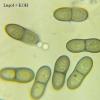
11-11-2025 20:16
Bohan JiaHi, lastly I have found these tiny yellow decayin

09-11-2025 13:20
Hello.A tiny ascomycete, appearing as erupting gra

08-11-2025 00:29
 Francois Guay
Francois Guay
I found this species in Quebec, Canada, on herbace

04-11-2025 09:07
Hello.A suspected Hymenoscyphus sprouting on a thi

04-11-2025 12:43
 Edvin Johannesen
Edvin Johannesen
Hi! One more found on old Populus tremula log in O
Black ascomata the bark Prunus sp.
Mirek Gryc,
30-04-2021 19:59
Hello
Perithecium very small, barely visible without a magnifying glass.
ASCI - reaction to the iodine did not notice.
Spores - change the color to olive under the influence of iodine.
(15.8) 16.6 - 22.3 (22.5) × (6.3) 6.4 - 7.2 (7.5) µm
Q = (2.3) 2.4 - 3.3 (3.4); N = 12
Me = 19.2 × 6.8 µm; QE = 2.8
I have no idea.
Mirek
Jac Gelderblom,
03-05-2021 17:19
Re : Black ascomata the bark Prunus sp.
Hello Mirk
It could be Sydowiella ambigua.
See attached pdf
greetings
Jac gelderblom
Mirek Gryc,
03-05-2021 19:43
Re : Black ascomata the bark Prunus sp.
Hi Jac.
I do not know if Ascomata is properly mature so I keep them alive. I will try to examine again for some time.
I do not know this species but worried me spores.
At Sydowiella ambigua, there is a visible stenosis at the septa. In my spores I did not notice it?
Thanks for the suggestions.
greetings
Mirek
I do not know if Ascomata is properly mature so I keep them alive. I will try to examine again for some time.
I do not know this species but worried me spores.
At Sydowiella ambigua, there is a visible stenosis at the septa. In my spores I did not notice it?
Thanks for the suggestions.
greetings
Mirek
Mirek Gryc,
10-05-2021 13:50
Re : Black ascomata the bark Prunus sp.
It seems to me that Ascomata is already mature and further breeding does not make sense. Spores have changed slightly but are still smooth.
Their Olive Colore leads me towards Amphisphaeria?
Also the characteristic Septa in the spores indicates this type.
With such features I came to two species:
Amphisphaeria Vibratilis - here all the features agree in addition to the dimensions of spores. Difference too big to recognize my find for this species, although I saw so marked on the internet, with such dimensions of spores.
Next species, whose dimensions of spores better fit, are Amphisphaeria Micheliae, which was also listed with Prunus.
In this species, however, there should be a blue reaction asci, which is not observed.
Their Olive Colore leads me towards Amphisphaeria?
Also the characteristic Septa in the spores indicates this type.
With such features I came to two species:
Amphisphaeria Vibratilis - here all the features agree in addition to the dimensions of spores. Difference too big to recognize my find for this species, although I saw so marked on the internet, with such dimensions of spores.
Next species, whose dimensions of spores better fit, are Amphisphaeria Micheliae, which was also listed with Prunus.
In this species, however, there should be a blue reaction asci, which is not observed.
In this situation, unfortunately but I will not find solutions for this collection unless someone friendly help.
I think will remain: Amphisphaeria Sp.
Spores - new measurement
(18.8) 19 - 20.16 (20.2) × (7.5) 7.6 - 8 µm
Q = (2.5) 2.51 - 2.59 (2.6) ; N = 8
Me = 19.6 × 7.7 µm ; Qe = 2.5
greetings
Mirek

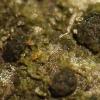
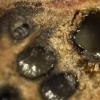
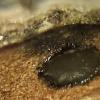

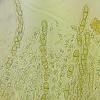

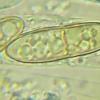
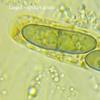
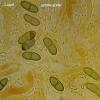
 Sydowiella-ambigua-0001.pdf
Sydowiella-ambigua-0001.pdf